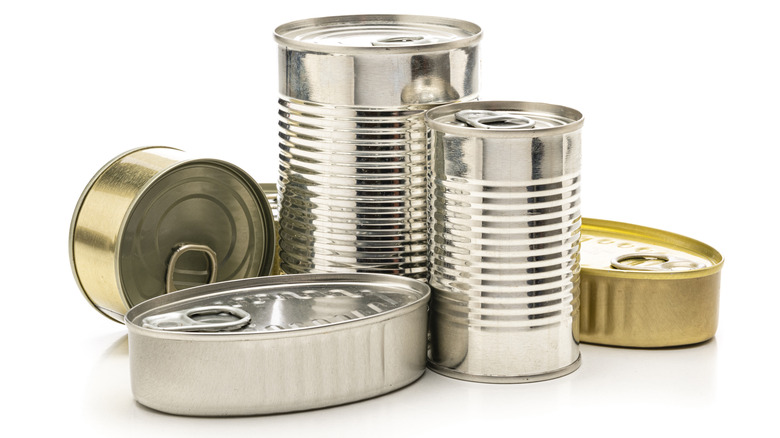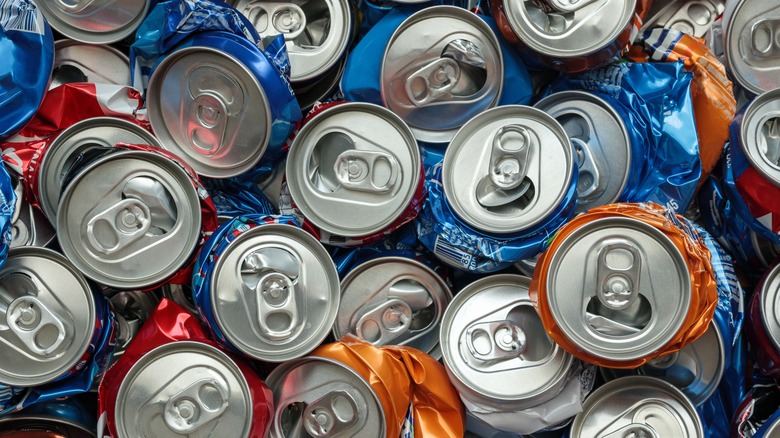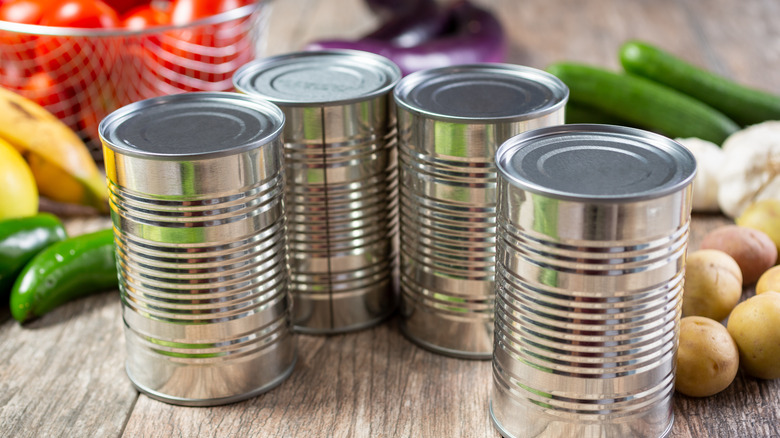The Elemental Difference Between Aluminum And Tin For Canned Foods
Take a moment to envision the periodic table ... yep, that massive diagram that may have given you nightmares in high school and college. Remember atomic numbers 13 and 50, aluminum and tin? Well, when it comes to the canned goods with which we fill our pantries and rely on for quick and easy meals, chemistry matters, and these two metallic elements play a major role. Aluminum and tin are two common materials used for food canning, each with its own set of scientific advantages. Understanding the differences between them can help consumers make informed choices when it comes to packaging and preserving their favorite foods. To start with the basics:
Aluminum is a lightweight and highly abundant metal known for its exceptional corrosion resistance, malleability, and low density, making it an ideal material for beverages, from soda to canned cocktails. Its natural oxide layer provides a protective barrier against environmental factors, preventing cans from rusting and maintaining the inner product's freshness. Moreover, aluminum is an excellent conductor of heat, which allows for quick cooling when placed in a refrigerator or ice bucket. Tin cans are particularly favored for packaging non-carbonated food items due to their durability and ability to withstand high-temperature processing methods like canning. The tin coating also offers a glossy appearance and can be customized with decorative labels and branding.
Aluminum is a mega-recyclable drink vessel
Next time you chug a can of Diet Coke, don't toss it in the trash! Aluminum is highly recyclable and can be melted down and reused with minimal loss in quality. In fact, aluminum recycling is economically efficient and environmentally friendly, making it an excellent choice for sustainability-conscious consumers.
Aluminum cans, for one, have gained popularity in the food and beverage industry for their lightweight and corrosion-resistant properties. One of the most significant advantages of aluminum cans is their ability to maintain the freshness and flavor of the contents by blocking out light and oxygen. This makes them ideal for products that can be negatively affected by exposure to these elements, such as carbonated beverages like soda and beer.
Aluminum's overall environmental impact is also up for debate. While aluminum production requires significant energy, its lightweight nature reduces transportation emissions, making it eco-friendly in that aspect. Tin production has its environmental concerns as well, but the recyclability of steel within tin cans can offset some of the drawbacks.
Tin cans are great at preserving foods
Tin is typically used for a wide range of canned food products, including fruits, vegetables, tinned fish, soups, beans, and more. Unlike aluminum, tin cans are made from steel coated with a thin layer of, well ... tin. The tin helps prevent the steel from rusting and reacting with the food inside. Tin cans have a long history of use in food preservation, dating back to the early 19th century.
Tin cans, as opposed to aluminum, do pose some recycling challenges. While the steel component of tin cans is recyclable, the tin layer can complicate this process. Separating the tin from the steel requires additional steps, making it less energy-efficient compared to aluminum recycling. However, advancements in technology are continually improving the recyclability of tin cans.
At the end of the day, not all goods are canned equally. The choice between aluminum and tin food cans depends on the specific product and consumer priorities. Aluminum cans are ideal for drinks, while tin cans are well-suited for food items with longer shelf lives. Both materials have their advantages, so people can make informed choices based on their preferences for preserving food and sustainability goals.


